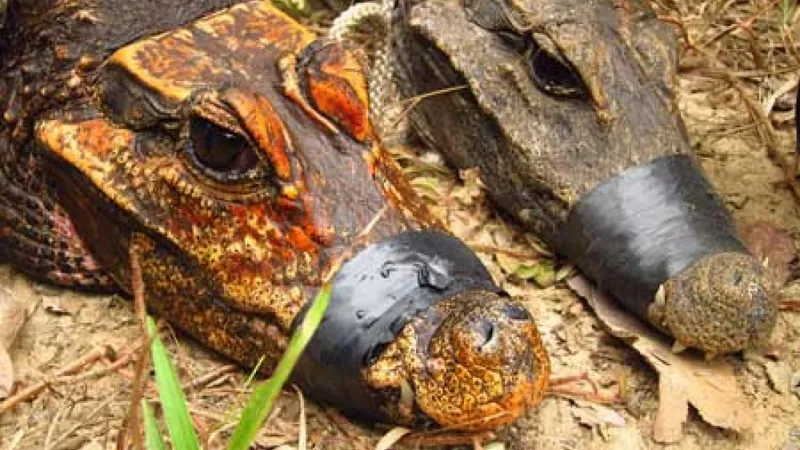
Meet the Orange Dwarf Cave Crocodiles: Nature's Mysterious Mutants in the Depths of Gabon
2025-01-04
Author: Sophie
Deep within the mystifying Abanda cave system in Gabon's Ogooué-Maritime Province resides an astonishing population of cave-dwelling dwarf crocodiles (Osteolaemus tetraspis). These diminutive reptiles, characterized by their striking orange skin, have adapted to a life surrounded by total darkness, where they feast primarily on cave crickets and bats.
Life in the Dark: A Unique Habitat
These cave-dwelling crocodiles are believed to have adopted their subterranean lifestyle thousands of years ago, although the exact timeline remains uncertain. Emerging research suggests that these reptiles have isolated themselves from their forest-dwelling relatives, leading to some fascinating evolutionary developments. Scientists estimate that the population of these crocodiles is relatively small, but it is difficult to pinpoint exact numbers due to the challenges of conducting research in such an inaccessible environment.
A Diet Worth Talking About
Unlike their forest counterparts, whose diets are diverse, these cave crocodiles rely heavily on bats and crickets, which are abundant in their dark caverns. This specialized diet seems to contribute to their physical condition—studies show that cave crocodiles are generally in better health, likely due to having no significant predators in their cave habitat and a consistent food supply.
The Eye-Opening Evolution
One of the most intriguing aspects of these orange crocodiles is their unusual pigmentation and potential genetic mutations. The orange hue is thought to stem from the chemical components in bat guano, particularly urea, which makes up a large portion of their environment. According to Matthew Shirley, a conservation biologist from Florida International University, prolonged exposure to this nutrient-rich waste might be causing a unique bleaching effect on their skin.
Moreover, unpublished genetic analyses suggest that these crocodiles may be forming a distinct genetic lineage not present in their forest-dwelling kin. This isolation hints at an evolutionary process where the cave crocs are gradually becoming a new species altogether. Richard Oslisly from France's Institute of Research for Development has highlighted the unique haplotype identified in these crocodiles, indicating that they are diverging from their relatives in a significant way.
What Lies Ahead?
With their isolated existence and the ongoing adaptations to cave life, the future of the orange dwarf cave crocodiles is both fascinating and enigmatic. Will these unique reptiles solidify their status as a new species in the coming years? And what other secrets might the hidden depths of Gabon's caves hold?
These extraordinary reptilian residents are not only a marvel of nature but also a reminder of how diverse and intricate life can be in even the most unexpected places. Their story is unfolding as researchers continue to study their behaviors, genetics, and the ecological importance of their habitat.



 Brasil (PT)
Brasil (PT)
 Canada (EN)
Canada (EN)
 Chile (ES)
Chile (ES)
 Česko (CS)
Česko (CS)
 대한민국 (KO)
대한민국 (KO)
 España (ES)
España (ES)
 France (FR)
France (FR)
 Hong Kong (EN)
Hong Kong (EN)
 Italia (IT)
Italia (IT)
 日本 (JA)
日本 (JA)
 Magyarország (HU)
Magyarország (HU)
 Norge (NO)
Norge (NO)
 Polska (PL)
Polska (PL)
 Schweiz (DE)
Schweiz (DE)
 Singapore (EN)
Singapore (EN)
 Sverige (SV)
Sverige (SV)
 Suomi (FI)
Suomi (FI)
 Türkiye (TR)
Türkiye (TR)
 الإمارات العربية المتحدة (AR)
الإمارات العربية المتحدة (AR)